by Tom Gaylord
Writing as B.B. Pelletier
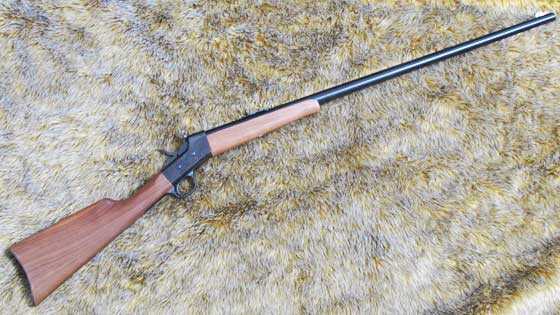
The Modoc from Air Ordnance is a new single shot big bore in 9mm.
This report covers:
- What is the Modoc?
- The difference between 9mm and .357 caliber
- Aluminum barrel!
- Long barrel
- Air cartridges
- 4500 psi
- The gun
- Open sights
- Weaver bases
- Air cartridges
- Open sights
- Summary
Today we take a look at an unusual air rifle — the Modoc from Air Ordnance.
This is the first time I have written about an airgun from Air Ordnance in this blog, but it isn’t the first time I have tested one. Several years ago I tested the SMG 22 belt-fed carbine they produce and wrote it up in a feature article in Shotgun News. Indeed one of the main photos on my website, The Godfather of Airguns, shows me holding that gun. My buddy, Otho, was so impressed when he shot it that he considered buying one.
What is the Modoc?
The Modoc is a 9mm big bore single shot air rifle, built on what looks like a Remington rolling block action. It isn’t, of course, but the action is steel. It uses an air cartridge instead of a reservoir inside the gun. There are many things about this airgun that are different, and we will consider them today. The first is why Air Ordnance decided to market the Modoc as 9mm instead of .357 caliber, when every other big bore maker on the market has switched over.
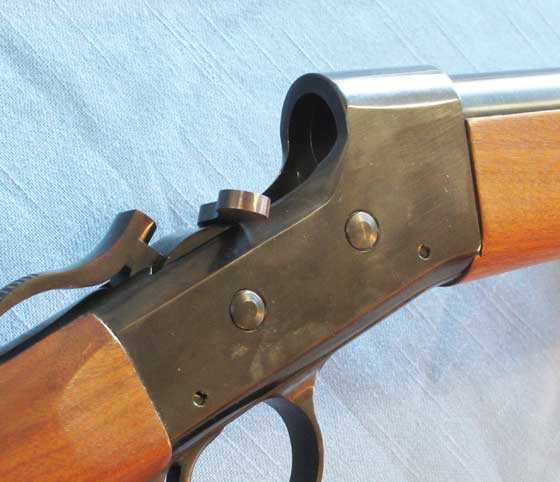
Cock the hammer and roll back the breechblock, and the rolling block is ready to be loaded.
The difference between 9mm and .357 caliber
Nine millimeter is very close to .357 caliber in size. A 9mm pistol bullet is either 0.355 or 0.356-inches in diameter. People who are not shooters will look at that and say that’s close enough to .357 caliber (which uses a .357 or .358-inch bullet) that those bullets will work, as well. What is one-thousandth of an inch? This is where it’s good to have some experience with reloading, because one-thousandth of an inch can make a huge difference in accuracy.
I advise big bore makers that there are hundreds of different lead bullets available in .357 and .358 caliber, but only a very few lead bullets in .355 and .356 calibers. That’s because most modern 9mm pistols shoot jacketed bullets, while .38 Special and .357 Magnum revolvers can shoot either lead or jacketed bullets. Lead bullets are not even loaded into 9mm calibers by the major reloading houses. Finding a supply of 9mm lead bullets will therefore be something of a challenge. Most people who shoot big bore airguns do not cast their own bullets, so the fact that bullet molds exist isn’t really a solution.
However, sometimes a larger lead bullet works well and even better in a gun than a bore-sized bullet — especially when driven at the low velocities of airguns and black powder guns. That is the nature of lead bullets. Shooters who shoot muzzleloading firearms are well-acquainted with this fact. So all is not lost for the Modoc. I have to test it on the range to see what works and what doesn’t, and that will include testing the H&N Grizzly bullet and the JSB Exact .35 caliber pellet.
Aluminum barrel!
Perhaps the most shocking thing about the Modoc is its aluminum barrel. Yes, I said aluminum, as in no steel liner. The airgun community is buzzing with talk about this, but all the comments I have read are focused on the wrong thing. They are concerned with the burst strength of the aluminum, and that’s not the problem. Aluminum can be more than strong enough to contain airgun pressures. What they should focus on is the wear resistance of the metal. Even steel muzzleloading barrels will wear out when shooting patched lead balls.
Air Ordnance is aware of the concern over barrel wear. They say they have shot their gun thousands of times and noticed no wear in the barrel. There is no way I can test for that in this report, or even in the feature article I plan to run next year in Shotgun News, so for now we will just have to accept what they say. As long as you don’t shoot jacketed bullets in the gun I think you’ll get a lot of use from the barrel.
The other thing the aluminum barrel does is it makes the rifle very light for its size. What should weigh 9+ pounds weighs only 6.5 pounds, according to the Air Ordnance website. The rifle I am testing weighs 6.5 pounds on the nose! That doesn’t happen too often.
Long barrel
Whoever designed the Modoc understood precharged pneumatic airguns because the barrel is 31.125-inches long. The Air Ordnance website says it’s 34.5 inches, but it’s not that even on the outside. I loaded an air cartridge and measured the barrel from the point where the bullet sits. From there to the muzzle is 31.125-inches.
That still gives the air plenty of time to accelerate the bullet to speed. Air Ordnance told me at the 2015 SHOT Show that they were getting as much as 180 foot-pounds from the Modoc, which is a lot for such a small caliber. That would be a 123-grain 9mm lead bullet moving at about 812 f.p.s. Lighter bullets and pellets can be expected to go even faster. We shall see.
Air cartridges
The Modoc uses air cartridges. Three cartridges and a filling station come with the rifle. If you have an air compressor you can fill these 3 cartridges to 4,500 psi before leaving home, but when you fill in the field from a carbon fiber air tank the pressure in the tank is going to start dropping with the first fill. This is going to present a problem for me testing velocity. After the first 3 shots I will be filling the cartridges at the range from my tank and the pressure will star to drop. There is no way around this without obtaining additional cartridges.
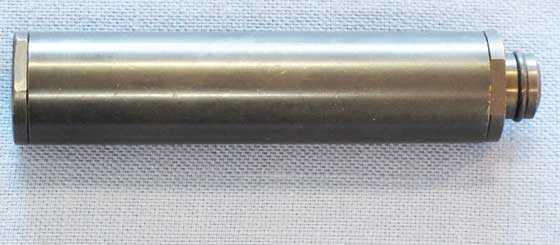
The steel air cartridge is filled with air and a bullet, then loaded into the rifle.
I will describe the air cartridges in detail in the next report. I will also explain how they work in the rifle. I will also show the cartridge fill station that comes with the rifle and describe how it works. For today, though, I have said all I’m going to.
4500 psi
The fill pressure is a severe limitation for the Modoc because it puts a real strain on the shooter. Many shooters do not have 4500 psi tanks yet, and the number of those who have compressors that go that high is smaller. I understand why the gun uses this pressure. The barrel is so long and the cartridge volume is so small that they need all the air they can pack into the space.
Of course the cartridge will function fine when filled to a pressure lower than 4500 psi. What it does to the gun’s accuracy at 50 yards, though, will be something we will find out together.
The gun
The Modoc is a long rifle — Air Ordnance says it’s fully 54-inches from stem to stern, but my tape measure says it’s 51.125-inches. It dwarfs most modern rifles — airgun and firearm. To find a gun case remember you need to get one that’s at least 52-inches long. I stuffed the test rifle into a Plano single scoped rifle case and it just fit. That case is 51.5 inches on the inside.
The gun is all metal and wood. The barrel is aluminum finished matte black and the blackened receiver is steel. Air Ordnance must have designed the receiver so it can’t be turned into a firearm, because BATF&E wouldn’t permit it to be sold without registration if it could.
The buttstock and forearm are walnut that’s stained dark brown. The wood is plain, but the stain is even and there is no wood filler to be seen. The forearm ends in a slight schnabel.
The gun is light but very well balanced heavy. The lightweight barrel does not pull down at the front.
Open sights
The rifle comes with open sights front and rear. The front is a tall brass blade similar to a Kentucky rifle blade but much taller and the rear is a full buckhorn — a type of sight seldom seen these days. It’s a range-compensating sight, once you learn how to use it. The rear sight has a couple different notches to choose from and is adjustable for elevation, only. Some windage correction is possible by drifting both the front and rear sights sideways in their dovetail slots.
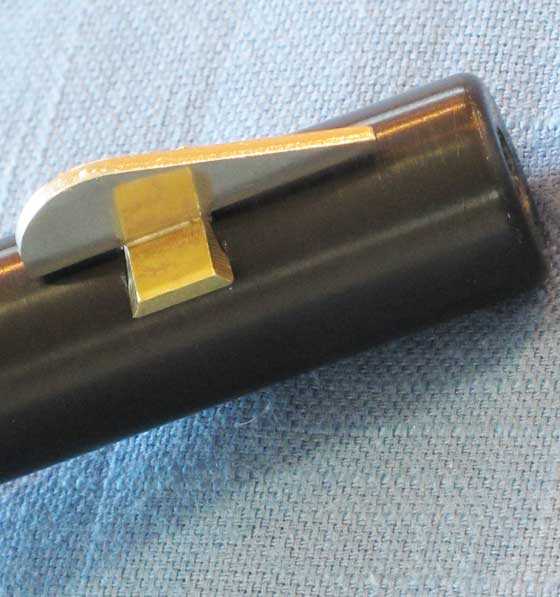
The front sight harkens back to the 1850s.
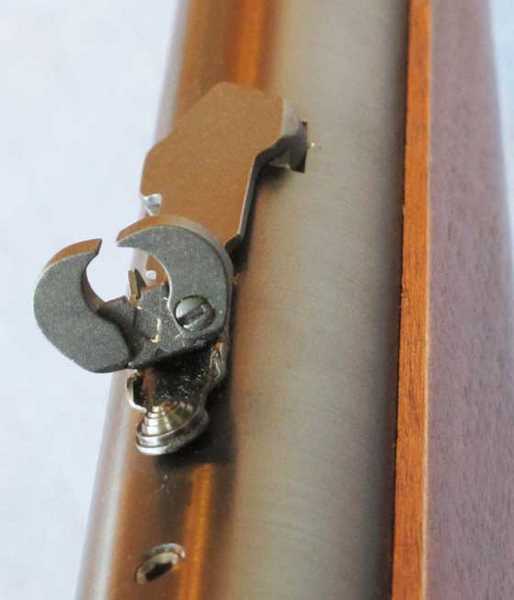
The full buckhorn rear sight has different notches to choose from. It adjusts for elevation only.
Weaver bases
The rifle is supplied with Weaver bases that attach to the action and the barrel. So the gun can be scoped. I will do it, because the test wouldn’t be complete without it, but my personal preference is to use the open sights.
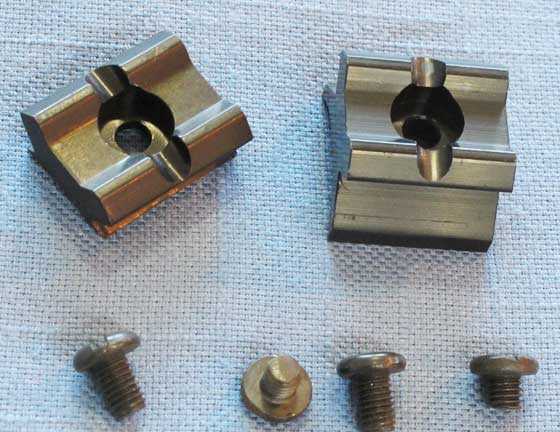
The rifle comes with Weaver bases that attach to the receiver and barrel.
Summary
We have a brand new big bore airgun to test. This one has a number of differences from other big bores that will make this an interesting test. There is so much new stuff that I will make a Part 2 to the introduction, and we will look at the air cartridges and filling station in that part. I’m learning this stuff right along with you, so stay tuned.